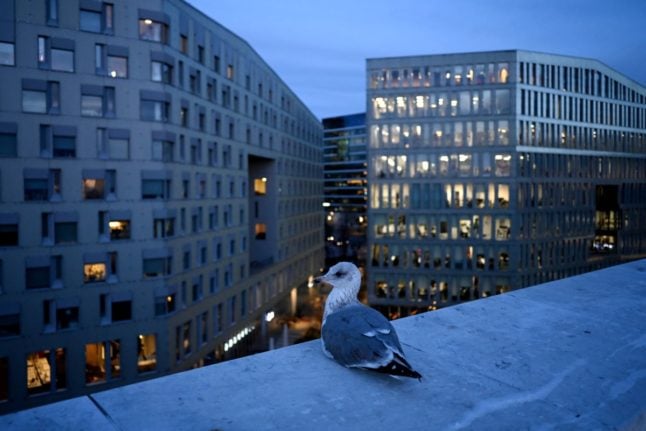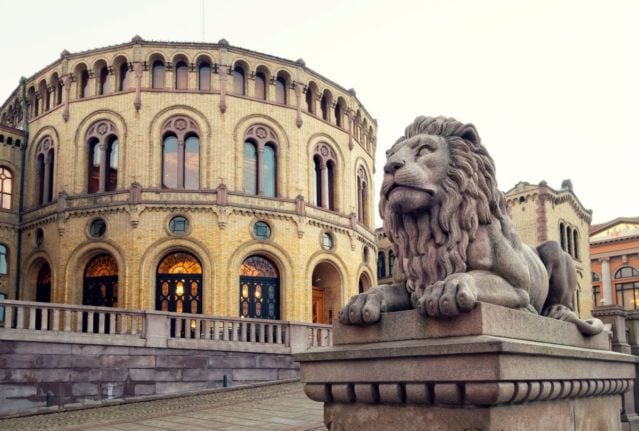When Norges Bank decided to hike the interest rate one last notch to 4.5 percent, it went againt the analysts’ expectations at almost all of Norway’s major banks.
“We see that the economy is cooling down, but the inflation rate is still too high,” said Ida Wolden Bache, the central bank’s chief, in a press release, saying that she expected to keep this higher rate in place “for quite some time to come.”
Norges Bank is predicting that the economy will grow just 0.4 percent in 2024, a slowdown from 1.4 percent in 2023 and much lower than the 2.2 percent growth forecast by Statistics Norway (0.9 percent excluding the oil and industry) or the 1.1 percent forecast by the Finance Ministry (0.8 percent excluding oil and gas).
Inflation to fall
When Norges Bank decided to hike the core rate, it increased its forecast for 2024 core inflation to 4.8 percent from a forecast of 4.7 percent it issued in September, which is down from the peak of 7.0 percent recorded in June but still a long way above the bank’s target of 2.0 percent.
If the bank is right, it is may well keep the interest rate at 4.5 percent for the whole of 2024, waiting until inflation appears headed to 2 percent before cutting it again.
Thomas von Brasch, head of Statistics Norway, expects the bank to begin to cut rates in mid-2024, but he acknowledged that the weakness of the krone would make it harder for Norway to get inflation down than for some of its trading partners.
“Norway is a small and open economy, and the exchange rate plays an important role. The weakening of the krone so far this year means that it will take a little longer than for many of our trading partners before inflation comes down to more normal levels,” he said.
House prices to fall, at least in the first half of the year
After rebounding unexpectedly in the first half of 2023, the prices of houses and flats in Norway began to fall towards the end of the year.
The property Nordvik Bolig estate agents told The Local previosuly that they expect a “slight drop in prices in the first half of 2024,” which they expect to then “even off during the second half of 2024.”
Slowdown in several industries, notably construction
According to a forecast by Statistics Norway, property construction is in a slump, with the level of investment falling by 18.8 percent between the last three months of 2022 and the July-September this year.
“There has never been such a big drop in such a short period registered in Statistics Norway’s quarterly figures, which go back to 1978,” the agency wrote, adding that the number of building projects started was at its lowest level since 2010.
The agency expects housing construction to fall by 30 percent overall in 2023 and 2024, driven by economic uncertainty, fewer sales of houses and flats, higher interest rates and increased construction costs.
“This will contribute to a further cooling of the Norwegian economy in the time to come,” von Brasch said.
According to Statistics Norway, other industries are also reducing investment, with Norges Bank listing the data centre industry, electric tools and equipment industry, the rubber plastic and cement, gypsum and calcium industries as reducing investment in 2024 due to falling profitability.
Unemployment creeps up
As a result, Statistics Norway expects the unemployment rate to creep up next year from 3.6 percent to 3.9 percent, reaching 4.1 percent in 2025. This is still, however, lower than the average rate of 3.9 percent seen in the 2000s, and the relatively tight labour market is expected to help lead to a small increase in real salaries in 2024.
Unlike in 2023, when, according to Norges Bank, people on average suffered a slight fall in their real salaries, in 2024, they can expect a slight rise in spending power.
In 2023, the average nominal salary hike of 5.5 percent was insufficient to cover the 5.2 percent rise in the price of goods, but in 2024, salaries will increase on average to 5.4 percent, while Norges Bank expects prices to rise by 4.8 percent.
“We expect increased unemployment going forward. The sudden stop in housing construction means that more people are unemployed in construction. In addition, the increase in unemployment is expected to pick up when more Ukrainians register in the labour market,” von Brasch said.



 Please whitelist us to continue reading.
Please whitelist us to continue reading.
Member comments